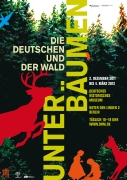

Forest Scenes
For centuries the natural area of “forest” offered a kind of stage for the animals and the hunt taking place there. At the same time, the forest was the workplace of the forester. His history as well as that of the hunt provide further evidence of changes in the perception of the forest.
The stag, the most magnificent representative of all the forest animals, could originally only be hunted by the nobility. The forester, in his capacity as policeman of the forest, had to put up with such hunting practices, and it took him a very long time to develop into a forestry specialist.
During the reign of Wilhelm II (1888–1918), the hunt reached a peak as an occasion to demonstrate power and a place to cultivate political or commercial relations. But even after the collapse of the German Empire the hunt retained its attractiveness as a social event.
